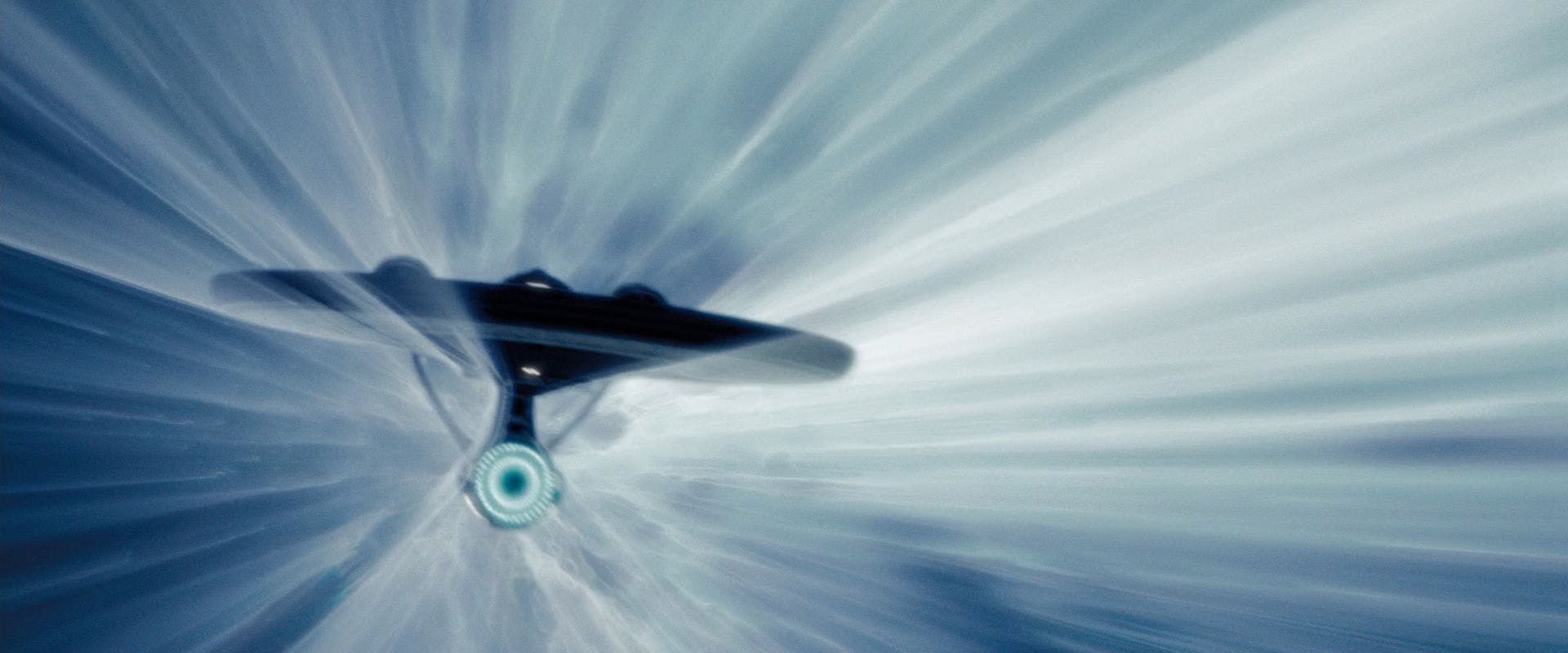Published Aug 5, 2019
Dispatches from #STLV: 'Physics of Trek' Teaches Physicists and Non-Scientists Alike
From warp speed to tricorders, Dr. Erin Macdonald's panel was a dazzling journey through the technologies that captured the imaginations of everyone in the audience.

StarTrek.com
When Dr. Erin Macdonald was finishing her PhD in theoretical physics at the University of Glasgow, she got tired of writing her dissertation and decided to try and work out how warp travel might work. As an expert in Einstein’s relativity, Dr. Macdonald was perfectly positioned to puzzle over the query. While she hasn’t totally worked out the problem, she has parlayed her interest in the science of Trek into a career as a science consultant – and thankfully, she’s willing to bring those services to the fandom masses at the annual Star Trek convention.
This year, Dr. Macdonald offered a fascinating session called “Physics in Star Trek.” In a wide-ranging one hour session, Macdonald started with transporters and landed at hypothetical particles called “tachyons” – particles that always move faster than the speed of light. Viewers who are enthusiastic about Trek but don’t have much of a science background may struggle to tell what’s real and what’s not, and sessions like this one at the convention provide a rare opportunity to hear a professional who shares their passion for Trek technologies and can bring a technical expertise to bear on it.
Such a session might seem like it could be boring for a professional physicist such as myself, but in fact the hour was a dazzling journey through the technologies that capture the imaginations of everyone in the audience, scientists or not. Macdonald’s explanations also provided examples of how Star Trek’s science can be brought into the classroom for general education courses. “Heisenberg’s uncertainty principle is why we don’t have transporters,” seems like a great way to capture the attention of students who might otherwise think the rules of quantum mechanics aren’t really relevant to everyday life. (The problem with transporters, by the way, is that because of the uncertainty principle, you will never know exactly where every particle in your body is, which makes it hard to transport all of them and reassemble them.)
While attendees might have heard about the problem with transporters before, they might be less familiar with recent developments in the field of tricorder technology. Macdonald explained that while we might think tricorders were the least likely Trek technology to come to life, in fact communications company Qualcomm had incentivized its development with a Tricorder XPRIZE. In 2017, Qualcomm awarded the $2.6 million top prize to the aptly named Final Frontier Medical Devices.
Final Frontier developed a device called DxTER, which like the fictional tricorder “includes a group of non-invasive sensors that are designed to collect data about vital signs, body chemistry and biological functions.” Macdonald was quick to note that DxTER is much larger than a handheld tricorder, but added that since we are just beginning with these technologies that’s to be expected.
Potentially the most eye-opening part of the session for this fellow professional physicist was the discussion of the potential for warp. Effectively, Macdonald explained, the way warp works is by compressing spacetime in front of the ship and extending it in the back. She highlighted Mexican theoretical physicist Miguel Alcubierre’s proposed warp drive — popularly known as the Alcubierre drive — as a potentially realistic implementation of this once mythical technology. The only problem? Alcubierre’s proposal seems to need an unrealistic amount of energy to work. Dr. Macdonald said she wasn’t terribly worried by this. “I’m very optimistic, more so than many of my colleagues, about warp technology,” she told the standing-room-only crowd.
The possibility of inertial dampeners becoming a reality is low – “We know we’re breaking physics but it’s okay because we’re acknowledging it,” is how Macdonald characterized the attitude of Trek writers about this – but the Bajoran solar sails featured in DS9 recently became a reality. Just last week, a Planetary Society mission successfully deployed Light Sail 2, which — like wind in a boat sail — uses pressure created by light to cruise through space. On that note, Dr. Macdonald included some advice for Star Trek’s future writers: wormholes are valid, and they are underutilized. Of course, there was a whole series about a wormhole (DS9 for anyone who isn’t paying attention), but she reminded us that it’s a great way to do long-distance travel without having to develop new technology to do it.
More generally, her enthusiastic optimism about the science of Star Trek and deep knowledge of its connections with the science of 2019 created an important synergy for everyone in the room, whether they were beginners or fellow PhDs in theoretical physics. The chart of cosmic exploration had never previously captured my imagination, but thanks to Dr. Macdonald, today it did.
Dr. Chanda Prescod-Weinstein (she/her) is an Assistant Professor of Physics and Astronomy and Core Faculty in Women’s Studies at the University of New Hampshire. Her research focuses on cosmology and particle physics. Find her on twitter @IBJIYONGI.
